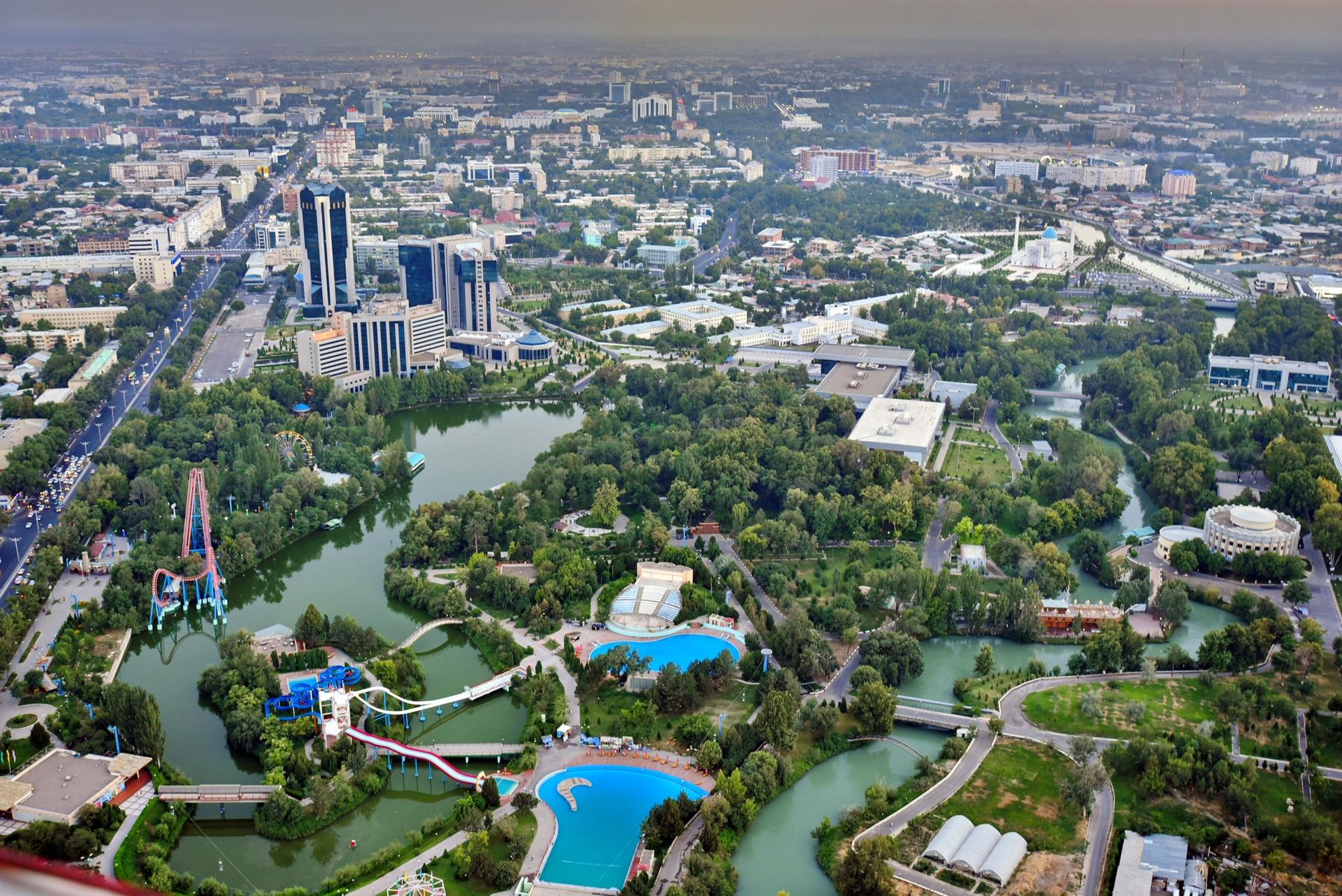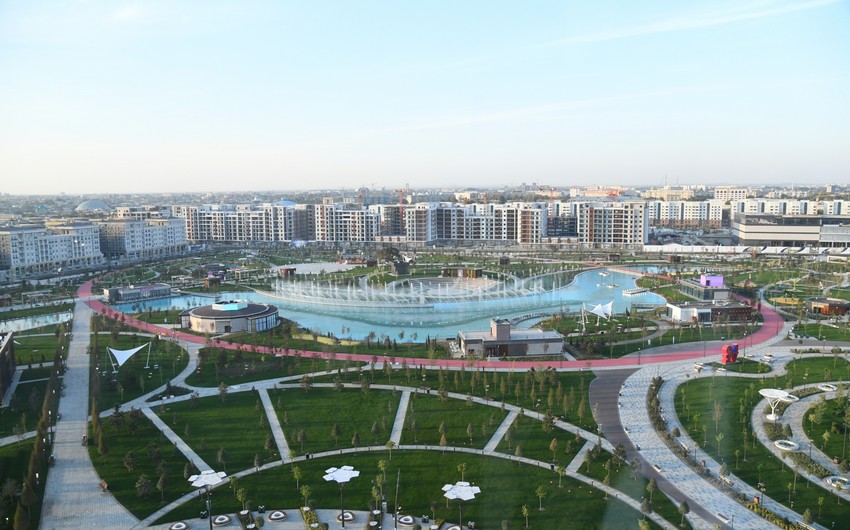In recent years, Uzbekistan has shown a steady increase in interest toward developing renewable energy sources (RES) and “green” energy, driven by the government’s strategic priorities in sustainable development and environmental security, Report informs, citing the article by Edvard Romanov, an expert at the Center for Economic Research and Reforms.
At the COP28 Summit in Dubai in December 2023, President of Uzbekistan Shavkat Mirziyoyev presented several initiatives aimed at accelerating the “green” transition, emphasizing the importance of diversifying the country’s energy balance and reducing its carbon footprint. He highlighted Uzbekistan’s commitment to increasing the share of renewables and promoting sustainable development, as well as strengthening international cooperation to support national and regional programs.
Within the Framework of the SDGs
A key guide for long-term development in many countries has been the resolution adopted by the UN General Assembly on September 25, 2015, titled “Transforming our world: the 2030 Agenda for Sustainable Development,” which outlines 17 Sustainable Development Goals (SDGs).
Among the goals related to energy is Goal 7, which aims to ensure universal access to affordable, reliable, and modern energy services by 2030, significantly increase the share of renewable energy in the global energy mix, and double the global rate of improvement in energy efficiency.
In Uzbekistan, the SDGs are being implemented in accordance with government decisions. On February 21, 2022, a Resolution “On Additional Measures to Accelerate the Implementation of National Goals and Objectives in the Field of Sustainable Development for the period up to 2030” was adopted, which approved measures to achieve the SDGs, including a substantial increase in the share of renewable energy in the country’s energy balance and a doubling of energy efficiency improvements by 2030.
Energy Policy Priorities
Given the projected dynamics of Uzbekistan's economic development up to 2030, annual electricity consumption growth is expected to be around 6-7%. At the same time, according to OECD data, Uzbekistan's energy intensity is approximately 2.5 times higher than the average for developed countries.
In this regard, Uzbekistan’s energy policy is focused on improving energy efficiency across economic sectors and social spheres, as well as the widespread adoption of energy-saving technologies and renewable energy sources.
In recent years, the government has adopted a series of decisions aimed at significantly reducing the energy intensity of various sectors, increasing energy efficiency, and promoting renewable energy. Government support measures have been introduced, and state standards have been revised and approved to enhance energy efficiency.
In 2019, the Laws “On Public-Private Partnership” and “On the Use of Renewable Energy Sources” were enacted, enabling the attraction of direct foreign investment from leading international companies with advanced innovative technologies as independent power producers in the electricity generation market. The Law “On the Use of Renewable Energy Sources” also provides renewable energy producers with several benefits and incentives.
As a result of subsequent amendments to legislative acts, long-term targets have been set for renewable energy deployment, specifically to increase the share of “green” energy to 40% of total electricity generation by 2030, along with state support measures for their implementation.
In 2022, the Ministry of Energy, in collaboration with the Asian Development Bank and the World Bank, developed a 10-year power supply plan for Uzbekistan. Implementation of this plan will lead to the creation of additional energy capacities by 2030, including 5 GW of solar energy, 1.9 GW of hydropower, and up to 3 GW of wind energy.
Contribution to Emissions Reduction
An important aspect of the “green” transition is the work on reducing greenhouse gas emissions. Uzbekistan has significant potential for further emissions reduction. Notably, the Center for Economic Research and Reforms (CERR) conducted a study assessing Uzbekistan’s emissions reduction potential through 2030 based on strategic goals.
The analysis showed that the majority of CO2 emissions in Uzbekistan are from the extraction, processing, and transportation of natural gas.
Additionally, with the dynamic growth in population and economy, Uzbekistan’s electricity demand is expected to reach 120 billion kWh by 2030.
Based on the study’s findings, experts believe that meeting this demand through traditional gas and coal combustion methods would require an additional 13.7 billion cubic meters of gas by that time. However, if the share of renewable energy reaches 25% of total generation by 2026, this shift towards “green” electricity supply will save additional gas volumes and prevent a 37.4-million-ton increase in CO2 emissions.

Potential for Achieving Goals
One of the key achievements in the “green” agenda has been attracting major international investors, such as Saudi Arabia's ACWA Power and the UAE’s Masdar. These companies are already implementing projects to build solar and wind power plants, which will provide over 5 GW of total capacity, significantly increasing the generation of clean energy.
Positive trends in Uzbekistan’s renewable energy sector include not only the active attraction of foreign capital and technology but also the improvement of the regulatory framework, creating favorable conditions for the accelerated development of “green” projects.
In recent years, the government has introduced a range of incentives, such as tax benefits for renewable energy projects and subsidies for purchasing equipment, which stimulates sector growth and attracts small and medium-sized businesses. As a result, the renewable energy sector is becoming more accessible to private investors and the public, who are increasingly interested in installing solar panels and participating in energy efficiency programs.
Future Plans
Uzbekistan demonstrates ambitious plans for the development of “green” energy, renewable energy sources, and energy-saving technologies, aiming to substantially increase their share in the overall energy balance.
There is a focus on constructing solar and wind power plants using advanced technologies, such as high-efficiency panels and energy storage systems, which will help stabilize the power supply and increase the share of renewable energy during peak hours.
As part of Uzbekistan’s long-term strategy, the country aims not only to develop renewable energy sources but also to promote the localization of component production for solar and wind power plants. This will create new jobs, improve economic conditions in the region, and ensure resilience to fluctuations in global energy prices.
At the same time, significant efforts are being made to develop energy transmission and distribution infrastructure, enabling the creation of regional energy corridors and improving the country’s export capabilities. Investment in energy infrastructure is an important area that opens up new opportunities for companies involved in the construction and management of transportation infrastructure.
In the context of resource shortages and rising energy demand in Central Asia, investing in sustainable energy projects in Uzbekistan offers high prospects for long-term growth and return on investment.
Overall, positive trends in Uzbekistan’s renewable energy sector include a steady flow of investments, a favorable business environment, the adoption of modern technologies, and improvements in energy efficiency.
The country is moving towards a sustainable energy future, which will not only meet its domestic needs but also position it as a significant player in the Central Asian energy market.
Conclusion
Uzbekistan is known as a sunny country, and this is the primary argument for developing such a crucial area in renewable energy generation as solar photovoltaic power plants.
There is significant solar energy potential in the southwestern, southern, and central parts of the republic, particularly in the Navoi, Bukhara, Samarkand, Surkhandarya, and Jizzakh regions.
The International Solar Energy Institute of Uzbekistan has estimated the technical potential for electricity generation from solar energy in Uzbekistan at more than 3000 TWh per year, which significantly exceeds the projected electricity demand by 2050.
According to foreign experts, Uzbekistan also has high wind energy potential in the northwestern and southwestern parts of the republic, particularly in Karakalpakstan, Bukhara, and Navoi regions. In Uzbekistan’s “roadmap” for transitioning to low-carbon energy, wind energy potential is estimated at 500 GW.
In the future, Uzbekistan could become one of the leading countries in the region in sustainable development and low-carbon economy. This path involves a range of complex and ambitious goals aimed at improving the environment, raising the population’s standard of living, and ensuring stable economic growth. Through a proactive approach, the country is already seeing initial results in its “green” energy transition and plans even deeper transformations, including the modernization of all key sectors of the economy.
Uzbekistan is moving toward creating a cleaner and more innovative economy, positioning the country to become a leader in sustainable development in Central Asia.
The implementation of these plans will lay a strong foundation for future generations, ensure resource conservation, and open up opportunities for further development of new “green” industries, fostering scientific research and innovation.


 https://static.report.az/photo/142c6b4e-ade6-3cdc-8dda-c78c169e4ad9.jpg
https://static.report.az/photo/142c6b4e-ade6-3cdc-8dda-c78c169e4ad9.jpg

